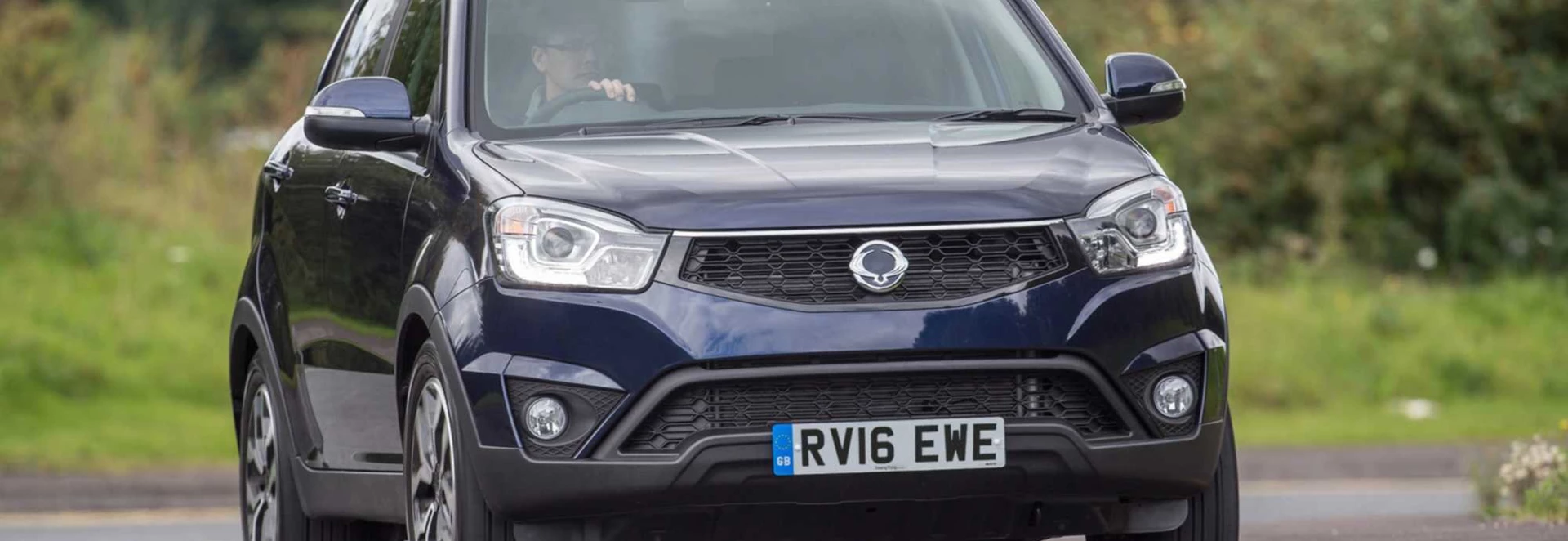While Hyundai and Kia sales have exploded, SsangYong is a lesser-known brand from South Korea, which has sold a relatively small number of worthy but fairly traditional SUVs and MPVs in the UK.
When it first went on sale in 2011, the Korando was easily SsangYong’s most competitive vehicle to date, thanks to its stylish looks penned by Italian design house Giugiaro. Compared with the larger Rexton, the Korando was also just the right size to compete with models like the hugely popular Nissan Qashqai, Kia Sportage and Ford Kuga.
Performance
For 2016 the Korando has seen its engine upgraded from a 2.0-litre to a 2.2-litre with a substantial 178bhp and 400Nm of pulling power, figures higher than many of its rivals. Depending on trim level, this is allied with either front- or four-wheel drive and a manual or automatic transmission, but regardless of this, the Korando wil hit 62mph from rest in 9.9 seconds.
We tested the range-topper and found initial acceleration to be quite strong thanks to all that torque, but the roar from the engine is also fairly pronounced when you hit the accelerator and the auto drops you into a lower gear. It’s a shame, as the engine is actually pretty quiet if you stay at a chosen speed, say on the motorway.
The automatic is generally very smooth too, blending gears comfortably from one to the next, which makes it ideal for towing. Not only that, but a two tonne towing capacity also means the Korando is appealing for caravan owners.
Ride and Handling
At low speeds the Korando’s light steering pays dividends, making it easy to steer through traffic
Our main bugbear with the Korando’s dynamic repertoire is it’s rubbery steering feel, but once you get used to it, you’ll realise there’s actually plenty of grip to lean on and not a whole lot of body roll. It might not be a class leader, but the Korando is confidence-inspiring and if you don’t push it too hard, the SsangYong flows nicely along a country lane. You expect any car in this class to be fairly comfortable and the Korando is respectable here too. Most roads are dealt with deftly, with only the odd thump from the suspension if you hit a sharp bump or can’t avoid a deep pothole. At low speeds the Korando’s light steering pays dividends, making it easy to steer through traffic and park in tight spaces. A tall seating position helps here too, with a good view out over the nose and sides of the vehicle, even if the rear view is somewhat restricted by the chunky C-pillars.
Interior and Equipment
SsangYong fashioned the name Korando by combining the first three and last two letters from the motto “Korea can do”.
Your view on the Korando’s interior will probably depend on your perspective. Bear in mind its significantly lower cost compared with rivals and the hard trim and dated looking trip computer might seem like a trade-off you’re happy to make. In fact, the Korando is top ELX trim is very well equipped, with heated leather front and rear seats, a seven-inch infotainment system with TomTom navigation, air-con and cruise control. The entry-level SE trim has cloth seats, but still gets desirable features like Bluetooth, alloy wheels, roof rails and front fog lights. The mid-range EX trim boasts the option of four-wheel drive, heated front seats, privacy glass and a rear-view camera, making it a good compromise. Space up front is as good as you’d expect, with plenty of head room and a light and airy feel. Rear passengers won’t find as much knee room as class leaders like the Hyundai Tucson, but headroom is good, so you sit fairly upright. The boot has 486 litres of space behind the rear seats, beating the Qashqai’s 430 litres of luggage room.
Cost
Fuel economy is up to 53.3mpg in the front-wheel drive manual, with emissions as low as 139g/km of CO2
The entry-level Korando starts from just £15,995, while the range-topping ELX four-wheel drive automatic is £22,495, undercutting most rivals by several thousand pounds. In fact, to get behind the wheel of a Hyundai Tucson with an equivalent level of power, you’d need to spend at least £27,045. Fuel economy is up to 53.3mpg in the front-wheel drive manual, with emissions as low as 139g/km of CO2. Go for the range-topper and these figures drop to 41.5mpg and 177g/km of CO2.
Our Verdict
Until the trendy SsangYong Tivoli crossover arrived in 2015, the Korando was easily the Korean manufacturer’s most contemporary model, representing a big step forward for SsangYong. It doesn’t have the interior quality of a Hyundai or Volkswagen, but if you would rather have the extra cash in your back pocket, the SsangYong could be appealing to those in need of a practical, straightforward SUV.




